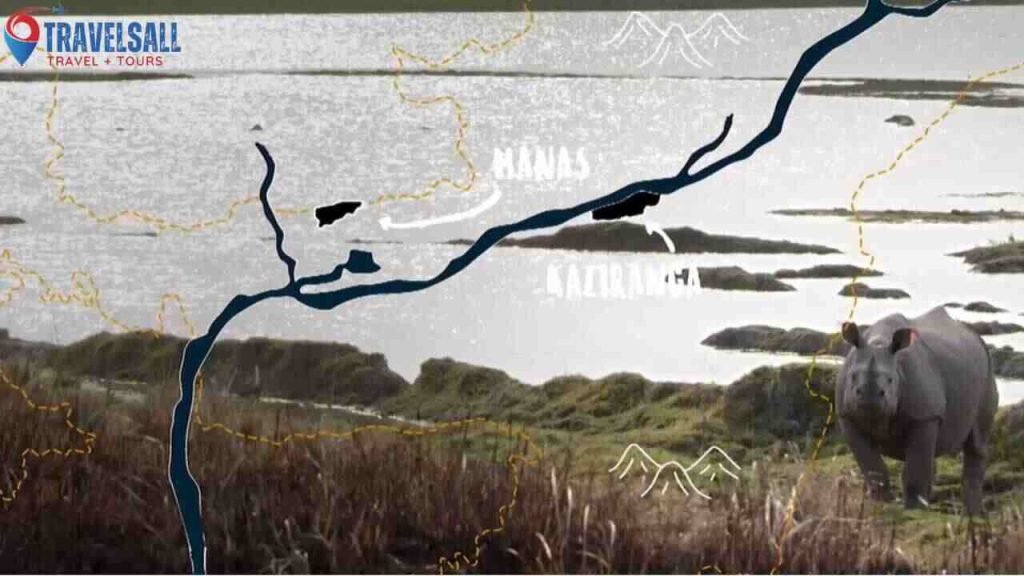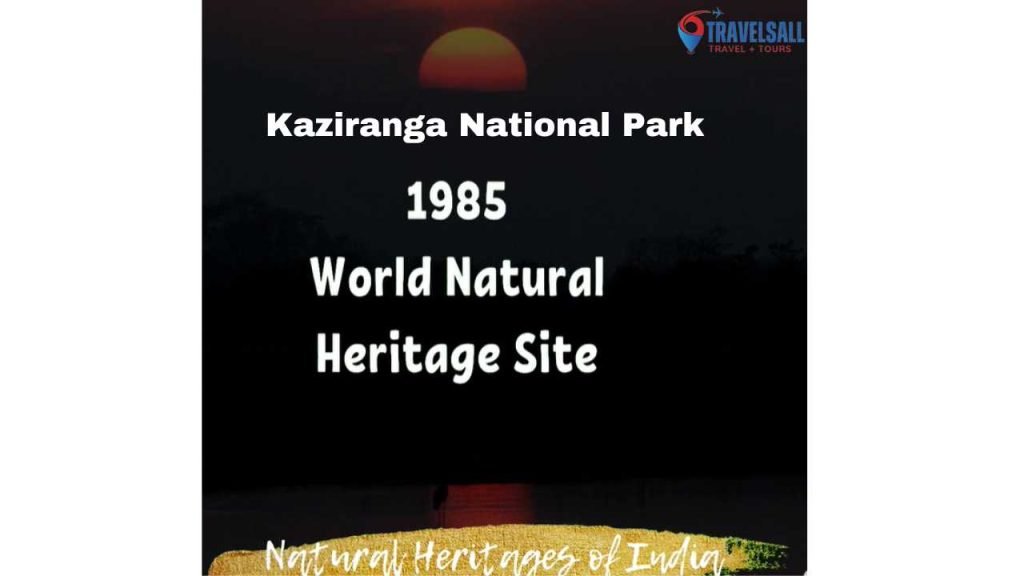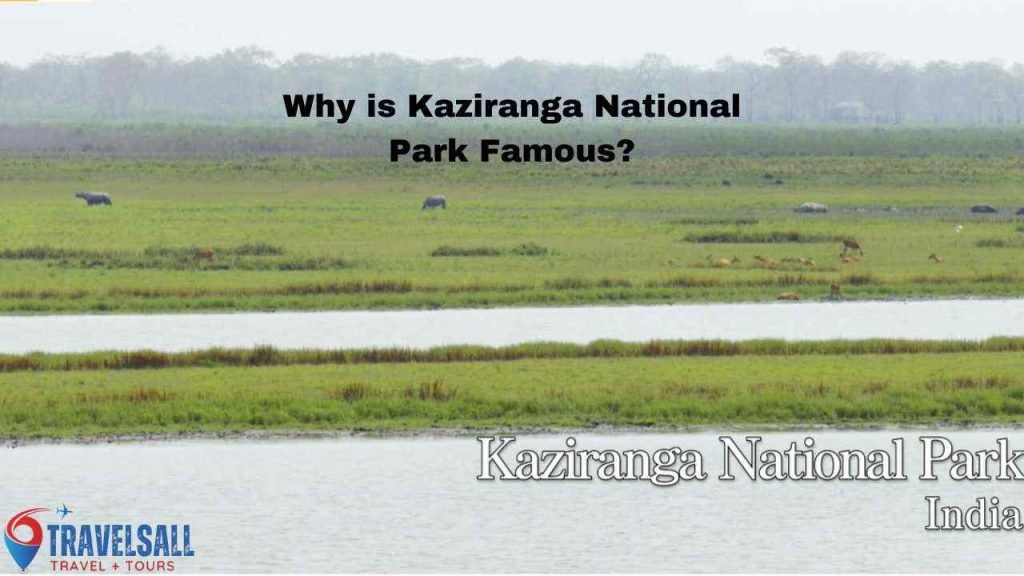Kaziranga National Park is renowned for hosting two-thirds of the world’s great one-horned rhinoceroses. Its unique ecosystem also supports a range of other wildlife species.
Settled in the heart of Assam, India, Kaziranga National Park stands as a testament to successful wildlife conservation.
UNESCO has recognized this biodiverse haven as a World Heritage Site, attracting nature enthusiasts from around the globe.
The park spans across the floodplains of the Brahmaputra River. It provides a lush habitat conducive to a dense population of majestic tigers, Asian elephants, and water buffalo.
Birdwatchers revel in the opportunity to spot migratory birds and numerous indigenous avian species.
Tourists flock to the region for thrilling jeep safaris and elephant rides. It offers up-close experiences with the park’s rich flora and fauna.
Kaziranga’s commitment to protecting rare species and its diverse ecosystem make it a must-visit destination for wildlife lovers.
Table of Contents
ToggleKaziranga’s Unique Biodiversity

Kaziranga National Park stands as a testament to nature’s splendor, housing a myriad of creatures within its worlds.
Settled on the floodplains of the Brahmaputra River, its fertile lands yield a diversity like no other. Breathing life into this natural jewel is its unique biodiversity.
Home To The One-horned Rhinoceros
Kaziranga is a sanctuary for the majestic Indian one-horned rhinoceros. These ancient creatures roam freely here, with the park boasting the highest density of their population worldwide.
Poaching once pushed them towards extinction. But now, thanks to conservation, they thrive in Kaziranga.
Habitat For Big Five Of Kaziranga
The ‘Big Five’ of Kaziranga National Park refers to its most iconic species:
- Rhinoceros: The star of the park, armored with thick skin.
- Elephants: Gentle giants, essential to the park’s ecosystem.
- Wild water buffalo: With mighty horns, they command the grasslands.
- Tigers: Elusive predators, adding to the park’s grandeur.
- Swamp deer: Known as ‘Barasingha’, they grace the wetlands.
These animals define the rich tapestry of life here and make Kaziranga a remarkable haven for wildlife enthusiasts and conservationists alike.
Geographical Marvel
The Kaziranga National Park sits as a geographical marvel in the heart of Assam, India. This extraordinary locale draws its fame not only from its wildlife but also from its unique terrain.
Enveloped by the life-giving waters of two rivers, Kaziranga hosts diverse ecosystems. These ecosystems support a tapestry of life forms. Let’s dig deeper into what makes its geography so special.
Between Two Mighty Rivers
Kaziranga lies nestled between the Brahmaputra and the Mora Diphlu rivers. These mighty rivers act as natural boundaries.
They also provide essential nutrients to the park’s floodplains. The annual floods from these rivers replenish the soil. This creates fertile grounds for the rich flora that thrives within.
Distinct Ecosystems Supported
The park’s unique geographical positioning encourages the coexistence of four distinct ecosystems:
- Alluvial Grasslands: Home to the famed one-horned rhinoceros
- Tropical Moist Broadleaf Forests: Providing shelter to numerous bird species
- Wetlands: Sanctuary for migratory birds and aquatic life
- Woodlands: The ideal habitat for large mammals like tigers
These ecosystems not only offer spectacular biodiversity. They also make Kaziranga a truly unique conservation area.
Conservation Success Stories

Kaziranga National Park shines as a beacon of wildlife conservation. This lush sanctuary boasts incredible stories of how endangered species clawed back from the edge of oblivion.
Key players in this ecological victory share their tales of perseverance and dedication within these vast grasslands.
Let’s dig into these tales of triumph that Kaziranga proudly narrates through its thriving wilderness.
From Brink Of Extinction
Kaziranga National Park stood witness to species almost lost to history. Tigers, rhinos, and elephants faced dark times, with numbers dwindling fast.
A century ago, hunting and poaching pushed the One-horned Rhinoceros towards near extinction.
Bold conservation measures transformed their fate. Initiative, courage, and stringent protection revived the park’s ecological balance.
Rise In Wildlife Population
The efforts bore fruit, as seen in the surging numbers of wild residents. Vigilant anti-poaching units, habitat management, and community involvement played roles in this success.
Every census brings joy as it counts more tigers, elephants, and rhinos. The park now celebrates having the highest density of tigers and a Rhino population soaring past 2400.
Asia’s largest population of the Eastern Swamp Deer calls Kaziranga its haven.
| Species | Count (Early 1900s) | Count (Recent Years) |
|---|---|---|
| One-horned Rhinoceros | Less than 200 | Over 2400 |
| Royal Bengal Tigers | Very few | Highest density |
| Eastern Swamp Deer | Endangered | Largest population |
- Stringent Anti-Poaching Efforts
- Effective Habitat Management
- Community Participation in Conservation
- Scientific Research and Monitoring
Recognition By Unesco
The majestic Kaziranga National Park stands proudly in the heart of Assam. India is known worldwide for its vibrant biodiversity and iconic one-horned rhinoceros.
But what truly sets it apart is the prestigious Recognition by UNESCO, elevating its status on the global map of conservation.
This acknowledgment not only showcases its natural splendor but also heralds international efforts for safeguarding the environment.
World Heritage Site Status

In 1985, Kaziranga was inscribed as a World Heritage Site by UNESCO. This title is a testament to the park’s outstanding universal value, unique biodiversity, and well-preserved ecosystem.
The criteria for such recognition are stringent, focusing on aspects like ecological processes and natural phenomena.
These attributes make Kaziranga a treasure trove for environmentalists and nature enthusiasts alike.
The park’s varying landscapes, from marshes and tall grasses to tropical broadleaf forests, provide a sanctuary for numerous species.
These habitats play a crucial role in the preservation of biological diversity. World Heritage Site tag boosts global attention, and support, and drives conservation efforts and regional research.
International Conservation Efforts
UNESCO’s recognition brings international efforts into the spotlight. Due to its status, Kaziranga benefits from global conservation programs, which are key to maintaining its pristine wilderness. Here is a glimpse into these collaborative endeavors:
- Wildlife Monitoring: Techniques and technologies from international experts help in tracking and studying the park’s inhabitants.
- Anti-Poaching Measures: Global support assists in efforts to protect endangered species from illegal hunting.
- Research Collaborations: Scientists from across the world join hands with local conservationists to understand and preserve the park’s ecology.
- Environmental Education: There’s a focus on raising awareness about biodiversity through international platforms.
Such initiatives ensure that Kaziranga continues to thrive and be a haven for the myriad species that call it home.
International cooperation underlines the fact that conserving this park is not just a regional, but a global concern.
This drives continuous innovation and strategy implementation for conservation. It makes Kaziranga National Park a beacon in the global effort to protect our natural world.
Challenges Faced By The Park
Challenges Faced by Kaziranga National Park stem from its unique location and burgeoning wildlife.
The park negotiates a delicate balance between conservation and the adversities posed by natural and human-induced factors.
Knowing these hurdles is key to preserving this sanctuary and its inhabitants.
Annual Flooding Impact
Kaziranga faces annual floods due to the Brahmaputra River’s rise. These floods are both a blessing and a curse. They replenish the ecosystem but also cause widespread damage.
- Loss of habitat for animals
- Displacement of wildlife, pushing them toward human habitats
- Risk to endangered species like the one-horned rhinoceros
Human-animal Conflict
The interface of the park with local communities has led to increased human-animal conflict. Animals wander into human settlements leading to life and property threats.
| Conflict Type | Challenges |
|---|---|
| Loss of Crops | Animals raiding farmlands |
| Threat to Life | Encounters that may turn fatal |
| Retaliatory Actions | Traps or poaching as defense mechanisms |
Measures like creating secure zones and awareness among locals are crucial. These steps can reduce these tense encounters and ensure peaceful coexistence.
Tourism And Local Economy
The fame of Kaziranga National Park, a UNESCO World Heritage Site, draws visitors worldwide. Tourism is the backbone of the local economy, creating jobs and supporting businesses.
Here’s how safari adventures and regional development benefit local communities.
Safari Adventures
Rhinos, tigers, and elephants roam the park. Tourists flock here for the jeep and elephant safaris. These adventures create unforgettable memories and encourage repeat visits.
- Jeep safaris: Explore the park’s diverse ecosystems.
- Elephant safaris: Get up close with majestic wildlife.
- Guided tours: Learn from experienced guides.
Boost To Regional Development
The park’s prominence gives a significant economic boost to the region. Locals benefit from tourism-related jobs such as guides, drivers, and hotel staff. Artisans sell traditional crafts, showcasing Assam’s rich culture.
| Benefit | Impact |
|---|---|
| Employment | Consistent jobs for locals |
| Crafts and Souvenirs | Source of income for artisans |
| Accommodations | Hotels and lodges prosper |
Research And Monitoring
Kaziranga National Park is not only a haven for wildlife enthusiasts but also a vital hub for ecological research.
The park’s commitment to Research and Monitoring is instrumental in preserving its unique biodiversity.
Scientists and conservationists work tirelessly to understand this complex ecosystem.
Their discoveries fuel conservation strategies, ensuring that Kaziranga remains a sanctuary for its inhabitants.
Study Of Flora And Fauna
At the heart of Kaziranga National Park’s scientific endeavors is the study of its flora and fauna. The park boasts a vast array of plant and animal species.
- Plants: Over 500 species enrich the habitat
- Birds: Home to migratory and resident bird species
- Mammals: Hosts the Big Five, including the famed one-horned rhinoceros
- Reptiles: A diverse range of reptiles thrive here
Researchers meticulously catalog and monitor these species, contributing to a global understanding of wildlife.
Climate Change Effects
Kaziranga’s ecosystem faces threats from climate change. To address this, dedicated programs monitor the impacts. These insights help forge climate resilience strategies.
| Area of Impact | Observation |
|---|---|
| Weather Patterns | Altered rainfall and temperature extremes |
| Water Sources | Fluctuations in river levels and wetlands |
| Species Adaptation | Shifts in species behaviors and habitats |
Action plans stem from this vital research, ensuring the park adapts and endures for future generations.
Involvement Of Indigenous Communities

The Involvement of Indigenous Communities is a hallmark of Kaziranga National Park’s fame.
Tribes living around the park for centuries have intimate knowledge of its lands and wildlife. They play a crucial role in its preservation and identity.
Cultural Significance
Kaziranga is not just home to various species but also a living cultural hub. Indigenous tribes like the Mising, Karbi, and Bodo have deep ties to this land.
Each tribe adds unique rituals, festivals, and folklore to the park’s rich tapestry.
Community-led Conservation Initiatives
Local communities lead many conservation programs here. They understand the intricate links between nature and their survival.
Through joint forest management committees, villagers take part in protecting the park’s flora and fauna. They help fight poaching and maintain the delicate balance of the ecosystem.
- Patrolling: Villagers often volunteer to patrol the park.
- Eco-development: Communities engage in sustainable tourism practices.
- Wildlife Monitoring: They assist in tracking animal populations and health.
Future Of Kaziranga
The future of Kaziranga National Park showcases a beacon of hope and biodiversity. Conservation efforts intensify to protect its unique wildlife.
Innovative eco-tourism strategies promise sustainability. The park’s next chapters are pivotal for global environmental heritage.
Conservation Plans
Robust conservation initiatives are paramount for Kaziranga’s future. The park focuses on these key areas:
- Species Protection: Featured species include one-horned rhinoceros and Bengal tigers. Strategies involve anti-poaching units and habitat management.
- Habitat Expansion: Expanding grasslands and wetlands aids species recovery.
- Community Involvement: Local awareness programs engage communities in conservation efforts.
Eco-tourism And Sustainability
Eco-friendly tourism steers Kaziranga towards a sustainable future. The park engages in:
- Implementing green practices within lodges and safari tours.
- Enhancing visitor education through environmental interpretation centers.
- Supporting local economies through sustainable souvenirs and services.
Frequently Asked Questions For Why Is Kaziranga National Park Famous
What Is Kaziranga National Park Famous For?
Kaziranga National Park is renowned for hosting two-thirds of the world’s great one-horned rhinoceroses. It is also a UNESCO World Heritage Site, celebrated for its biodiversity and high density of tigers.
Why Do People Visit Kaziranga?
People visit Kaziranga National Park to see the one-horned rhinoceros, and diverse wildlife, and enjoy its picturesque natural habitat. Its status as a UNESCO World Heritage Site also attracts tourists.
Why Is Kaziranga National Park A World Heritage Site?
Kaziranga National Park is a World Heritage Site due to its unique biodiversity and the presence of the endangered one-horned rhinoceros. Its ecosystems are of significant natural value, which UNESCO recognizes.
Why Is Kaziranga Identified As An Important Bird Area?
Kaziranga is designated as an important bird area due to its diverse avian habitat, which supports numerous endangered and migratory bird species.
Conclusion
Kaziranga National Park stands out as a bastion of biodiversity. Its fame is well-deserved, owing to the majestic one-horned rhinoceros that calls it home.
Tourists flock here for unparalleled wildlife sightings and breathtaking landscapes. Indeed, Kaziranga’s rich ecosystem and conservation success stories make it a jewel in India’s ecological crown.
Its allure is timeless, beckoning nature enthusiasts and adventurers alike to discover its wonders year after year.



